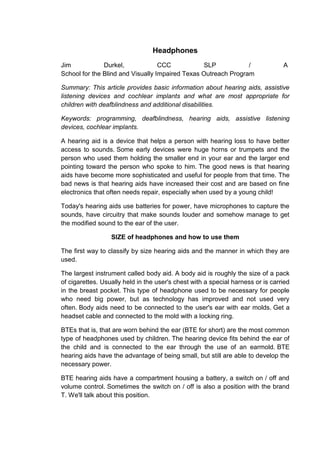This document provides information about different types of headphones, including their sizes, components, and uses. It discusses body aids, BTE aids, ITE/ITC/CIC aids, analog vs. digital circuits, microphones, assistive listening devices, batteries, and earmolds. BTE aids are most commonly used by children due to their small size but adequate power. Earmolds must be custom fitted for proper sound delivery. Accessories like assistive listening devices can further improve the listening experience in noisy environments.






